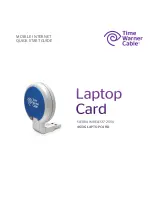
●
Repeat tests
●
Display or save test results
●
Run thorough tests to introduce additional test options to provide extra information about the failed device(s)
●
View status messages that inform you if tests are completed successfully
●
View error messages that inform you of problems encountered during testing
NOTE:
Some tests for specific devices require user interaction. Always ensure that you are present at the computer
terminal when the diagnostic tests are performed.
For more information, see
https://www.dell.com/support/kbdoc/000180971
.
Running the SupportAssist Pre-Boot System Performance Check
Steps
1. Turn on your computer.
2. As the computer boots, press the F12 key as the Dell logo appears.
3. On the boot menu screen, select the
Diagnostics
option.
4. Click the arrow at the bottom left corner.
Diagnostics front page is displayed.
5. Click the arrow in the lower-right corner to go to the page listing.
The items detected are listed.
6. To run a diagnostic test on a specific device, press Esc and click
Yes
to stop the diagnostic test.
7. Select the device from the left pane and click
Run Tests
.
8. If there are any issues, error codes are displayed.
Note the error code and validation number and contact Dell.
System diagnostic lights
Power and battery-status light
Indicates the power and battery-charge status.
Solid white
—Power adapter is connected and the battery has more than 5% charge.
Amber
—Computer is running on battery and the battery has less than 5% charge.
Off
●
Power adapter is connected, and the battery is fully charged.
●
Computer is running on battery, and the battery has more than 5% charge.
●
Computer is in sleep state, hibernation, or turned off.
The power and battery-status light blinks amber along with beep codes indicating failures.
For example, the power and battery-status light blinks amber two times followed by a pause, and then blinks white three times
followed by a pause. This 2,3 pattern continues until the computer is turned off indicating no memory or RAM is detected.
The following table shows different power and battery-status light patterns and associated problems.
Table 9. LED codes
Diagnostic light codes
Problem description
Recommended solutions
1,3
Short in hinge cable tripped OCP1
Check if the display cable (EDP) is seated
properly or pinched at the hinges. If problem
persists, replace either display cable (EDP) or
display assembly (LCD).
1,4
Short in hinge cable tripped OCP2
Check if the display cable (EDP) is seated
properly or pinched at the hinges. If problem
persists, replace either display cable (EDP) or
display assembly (LCD).
Troubleshooting
81





































